

 Wine consumers often have great respect, not to say reverence, for fine wine. Old vintages, famous producers, famous vineyards. It affects us all at some point. An awe that comes when you realize you have a Grand Cru or something similar in the glass.
Wine consumers often have great respect, not to say reverence, for fine wine. Old vintages, famous producers, famous vineyards. It affects us all at some point. An awe that comes when you realize you have a Grand Cru or something similar in the glass.
Wine is not just a beverage. If it were so, the price range for wine would not be so extreme. A wine cannot taste so delicious so that as a mere beverage it is worth 100, 500, 1,000 euros or more. You pay for the wine’s uniqueness, that it is made in small quantities, because it is world famous, because it comes from a historic vineyard etc. There is nothing wrong with that. As long as you get to see the label and that you know why the wine is so costly. To taste and drink such a wine blind is in a way useless. You are drinking an experience, a story, a rarity, a name, just as much as you are drinking “just a wine”.
Perhaps these super-expensive wines would not fare so well in a blind tastings. Or rather, it is quite certain that the outcome could be surprising. Anything can happen in a blind tasting. A wine that costs $10 can get a higher score than the one which costs $100. There have been many illustrations of this.
Two examples are Chateau Reignac in Bordeaux, a “simple” appellation Bordeaux, and Vina Errazuriz in Chile, who sometimes arrange blind tastings of their wines against well-known and prestigious Bordeaux chateaux. Often with the result that the “simple” wine ends up high up on the ranking.
Another example is a tasting organized a few years ago by La Revue du Vin de France. It was a totally blind tasting of wines in the price range from 3 euros to 3000 euros (including, Chateau Petrus). The participants ranged from amateurs to very experienced professionals. They were not told what the contents or idea of the tasting was. The task they were given was simple: taste the wines blind and say how much they would be prepared to pay for the wine. No wine was given a price tag, blind, at over 30 euros.
Does this mean that you are throwing away your money when buying expensive wines? No, of course not. But one should perhaps not be surprised by some unexpected results in blind tastings. And you should perhaps make sure that when you serve exclusive wines the guests get to see the label. In any case see it in good time before the wine is finished. In order for them to really be able to appreciate the wine at its true “value”.
Britt & Per
PS: Recommend to your friends to read the Brief !
– – – – –
What’s on at BKWine Tours
- Chile and Argentina in South America, February 6-21, 2016
- South Africa, February 26 – March 7, 2016
- Bordeaux, April 20-24, 2016
For more information please contact us on email or on phone (we’re on French time), or go to our wine travel site on www.bkwinetours.com!
We also make custom designed wine tours – on-demand tours for you and a group of friends, for your company (maybe to scout new winegrowers?), for a special event… We can combine winery visits and wine touring with other activities: gastronomic workshops, visit to an oyster farm, truffles hunting, cheese making, and more. More info on the custom designed and bespoke BKWine wine tours and travel here!
Wine tours in Finnish: We also do wine tours in Finnish. And in German, Norwegian, Spanish… Do you want the latest news and updates on our wine travel activity? Subscribe here! (Second alternative BKWineTours.com)
Do you want the latest news and updates on our wine travel activity? Subscribe here! (Second alternative BKWineTours.com)
From the World of Wine
What do consumers think about organic wine?
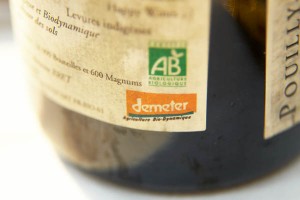 A major market research conducted on behalf of Sudvinbio, a French producer association for organic wines, shows how consumers in four countries – France, Germany, the UK and Sweden – perceive organic wines. A large proportion of the respondents in the different countries drink organic wine from time to time. If they are hesitant to buy organic it is due either to the fact that they think the price is too high or that they do not have enough information about the benefits of organic wine.
A major market research conducted on behalf of Sudvinbio, a French producer association for organic wines, shows how consumers in four countries – France, Germany, the UK and Sweden – perceive organic wines. A large proportion of the respondents in the different countries drink organic wine from time to time. If they are hesitant to buy organic it is due either to the fact that they think the price is too high or that they do not have enough information about the benefits of organic wine.
The price is a stumbling block, particularly in France where 73% of respondents think organic wines is more expensive than other wines but also in the UK (69%) and in Germany (63%). This figure is much lower in Sweden. Only 39% of Swedes think organic wine is expensive.
However, the Swedes, along with the Germans and the English, feel there is a need for more information about organic wines. 36 % of the Swedes also want a more varied range of organic wines. Read the report here: www.ipsos.fr
Read more on organic (and biodynamic) wines in our book.
Chenin Blanc plantings decrease in Anjou
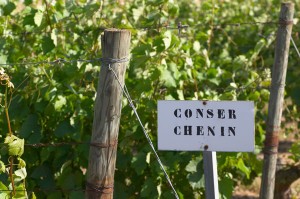 Anjou in the Loire Valley is an important region for the white grape Chenin Blanc. In Anjou you find for example Savennières where they produce great dry Chenin wines and Coteaux du Layon where they make some fabulous sweet Chenin wines. Today there are 5000 hectares of Chenin Blanc in Anjou. The black grapes have increased and winegrowers are now concerned that the Chenin surface will fall even further.
Anjou in the Loire Valley is an important region for the white grape Chenin Blanc. In Anjou you find for example Savennières where they produce great dry Chenin wines and Coteaux du Layon where they make some fabulous sweet Chenin wines. Today there are 5000 hectares of Chenin Blanc in Anjou. The black grapes have increased and winegrowers are now concerned that the Chenin surface will fall even further.
Chenin Blanc has never been a trendy grape variety but isn’t it time for this great and versatile variety to get into the limelight? We have loved it for a long time. It is not France but South Africa that has the largest surface planted with Chenin Blanc, 18 500 hectares. France has 9800 hectares, of which most is in the Loire Valley. 500 hectares is in Limoux in the Languedoc. In South Africa a fair amount of Chenin is distilled for brandy and some of the rest becomes simple bulk wine but there are fortunately a group of growers who takes advantage of the grapes amazing character. Chenin Blanc, we support you! Read more here: vitisphere.com
Next season’s wine tours launched
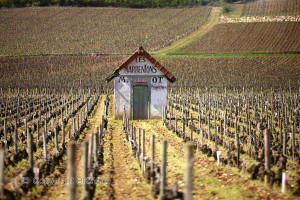 We have now published all the details on next season’s wine tours. It will be a virtual stand-off between the New World and the Old World. The first wine tour will take you to South Africa, one of the most dynamic new world wine countries today. The second tour goes to Bordeaux, the world’s most famous wine region, where we will take you to some of the most interesting chateaux of this classic. (Our tour to South America is unfortunately fully booked.)
We have now published all the details on next season’s wine tours. It will be a virtual stand-off between the New World and the Old World. The first wine tour will take you to South Africa, one of the most dynamic new world wine countries today. The second tour goes to Bordeaux, the world’s most famous wine region, where we will take you to some of the most interesting chateaux of this classic. (Our tour to South America is unfortunately fully booked.)
Here is our press release: New World vs. Old World on spring wine tour program 2016 at BKWine Tours.
You can find all the program details here: BKWine wine tours.
Less spraying with resistant grape varieties
For more than a decade there has been research going on in France in order to obtain grape varieties that are resistant to the fungal diseases oidium and mildiou. The research organization INRA believe that these varieties will be able to come on the market in 2017. 36 different resistance crossings are already out in the vineyards for experimental purposes. A large part of the spraying that is made in the vineyards, be it with synthetic products or with copper and sulphur, are made to combat these two fungal diseases.
The research continues. The next step is to develop crossings with resistance to other diseases, like black-rot and, perhaps the biggest challenge, to find solutions to the problem of ESCA and eutypiose, two other severe fungal diseases that presently have no cure. It is important to note that this research does not involve genetic modification. Read more here: vitisphere.com
Carignan on the move in Chile; now challenging Carmenere?
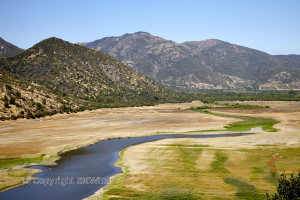 Carignan is a grape loved by many producers in the Languedoc who think that Carignan gives the most typical Languedoc wines. Also in other places you find growers that are fond of the Carignan. In the region of Maule in Chile, there is an association that calls itself VIGNO. It is a group of producers that make wine from old Carignan vines. To qualify as a VIGNO wine, the wine must contain at least 65% Carignan from Maule. The vines must be at least 30 years old and cannot be irrigated. VIGNO wines are made both by very small wineries and some of the big ones, like Concha y Toro and Undurraga. We have not yet tasted any of these wines, but will hopefully do so soon. Carignan is a favourite of ours too.
Carignan is a grape loved by many producers in the Languedoc who think that Carignan gives the most typical Languedoc wines. Also in other places you find growers that are fond of the Carignan. In the region of Maule in Chile, there is an association that calls itself VIGNO. It is a group of producers that make wine from old Carignan vines. To qualify as a VIGNO wine, the wine must contain at least 65% Carignan from Maule. The vines must be at least 30 years old and cannot be irrigated. VIGNO wines are made both by very small wineries and some of the big ones, like Concha y Toro and Undurraga. We have not yet tasted any of these wines, but will hopefully do so soon. Carignan is a favourite of ours too.
The University of Talca, the capital of Maule wine region, and the University of Santiago De Chile has launched a research project to study 400 hectares of Carignan from different growers, to see how the vines thrive and grow in different soils and different climates. Perhaps Carmenère will soon see itself overtaken by Carignan as Chile’s emblematic grape? Carmenère is grown on around 9,000 hectares in Chile. The most important grape variety in Chile however is Cabernet Sauvignon, planted on over 40 000 hectares. Read more here: lepanmedia.com
Ageing wine in the closet?
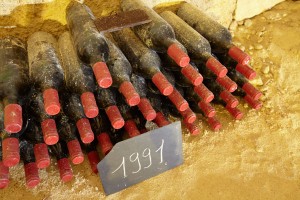 On average, the French store 67.7 bottles with a value of 1020 euros in their homes. The average price per bottle is 15 euros. 63% of the French have a “wine cellar”, small or large, at home. 15% of all bottles purchased in France, is purchased to be aged.
On average, the French store 67.7 bottles with a value of 1020 euros in their homes. The average price per bottle is 15 euros. 63% of the French have a “wine cellar”, small or large, at home. 15% of all bottles purchased in France, is purchased to be aged.
But there are gaps in the knowledge of how to store wine, a survey shows done by the marketing company Ipsos for the company Eurocave (that sells wine fridges). Too many, especially among the young, seem to keep their wines in the kitchen. If you could get them to move the bottles from the kitchen into a dark closet, much would be gained. Though not for Eurocave course! Read more: lavigne-mag.fr
The harvest 2015 in France
Overall it has been a very good year in France. We have seen many happy faces in the vineyards. But nothing is perfect and some regions have had problems.
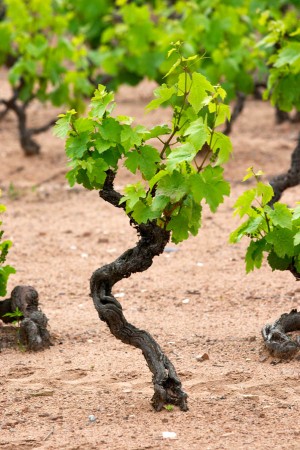 Burgundy: Very high quality. Early flowering, very hot and dry summer and the rain that came in August were much needed. No diseases and the producers could harvest grapes with excellent maturity. The quantity is slightly less than hoped for because of the dry summer.
Burgundy: Very high quality. Early flowering, very hot and dry summer and the rain that came in August were much needed. No diseases and the producers could harvest grapes with excellent maturity. The quantity is slightly less than hoped for because of the dry summer.
In northern Burgundy, in Chablis, Irancy and Saint-Bris, however, a hailstorm caused problems on 1st of September. There was major damage in some vineyards but still quite limited, luckily. Because the grapes were ripe, they could be harvested directly after the hail, so that no rot had time to evolve.
Champagne: Also here the growing season has been more of less perfect with dry and warm weather and a bit of the September rain that saved the vines from excessive water stress. The harvest began in early September and the producers are satisfied, very satisfied. We can probably look forward to a fine vintage Champagne 2015.
Bordeaux: Nice, warm and dry also in Bordeaux. The grapes matured slowly, the veraison (when the grapes change colour) was early and homogenous. The white grapes were harvested from early September and the black grapes from around the third week of September. Excellent overall quality of both white and red wines.
Languedoc has had a very satisfactory harvest in terms of both quality and quantity. But the weather gods created some problems in the department of Hérault in the evening on September 12 when a powerful storm hit the area with more than 334 mm of rain in three hours. Vineyards in Saint-Pargoire, Montagnac, Brignac, Florensac and Agde were totally flooded.
Old and new among Fonseca’s Port Wine
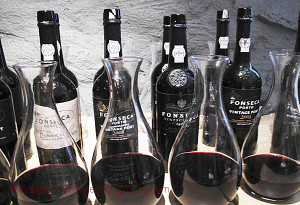 “This year it is 200 years since Fonseca was founded in 1815. In different ways a magical year 1815, the year when Napoleon’s army was defeated at the Battle of Waterloo by the English, Scottish and Prussian troops. To the English port have always meant a lot, and so it still does.
“This year it is 200 years since Fonseca was founded in 1815. In different ways a magical year 1815, the year when Napoleon’s army was defeated at the Battle of Waterloo by the English, Scottish and Prussian troops. To the English port have always meant a lot, and so it still does.
Fonseca is one of the most reputable port producers and is one of the few that does not have an English name. In the past, in the 1970s, when you could buy vintage port bottled in the country of destination (Sweden in my case) I happily bought Swedish-bottled port from Fonseca, Taylor and Dow”, writes Roland Eriksson.
Read the rest of Roland’s article on BKWine Magazine: Old and new among Fonseca’s Port Wine.
Chateau Belgrave; can you tell how close it is to Saint-Julien?
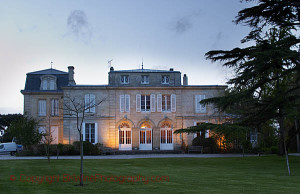 Chateau Belgrave is located very close to Saint-Julien and has no clear terroir limit that can be detected even by an attentive wine traveller. However, the limit was already fixed in 1855 and the property has since been classified as a fifth cru in the Haut-Médoc, not in St. Julien. The current owner, Dourthe, bought the property in 1979 and is happy to point out just how close to Saint-Julien it is. So at a vertical tasting of Belgrave this question naturally arises.
Chateau Belgrave is located very close to Saint-Julien and has no clear terroir limit that can be detected even by an attentive wine traveller. However, the limit was already fixed in 1855 and the property has since been classified as a fifth cru in the Haut-Médoc, not in St. Julien. The current owner, Dourthe, bought the property in 1979 and is happy to point out just how close to Saint-Julien it is. So at a vertical tasting of Belgrave this question naturally arises.
BKWine’s reporter Mikael Karlin talks about an interesting wine tasting on BKWine Magazine: Chateau Belgrave; can you tell how close it is to Saint-Julien?
Italy, Portugal, Germany, USA and Austria at Handpicked Wines
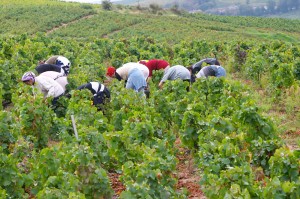 Two years ago, my overall impression from Handpicked’s range tasting was very positive. It focused on smaller producers who had “something extra” that can make the difference in a large wine selection. (Handpicked Wines is a Swedish importer specialising in wines from small-ish producers.)
Two years ago, my overall impression from Handpicked’s range tasting was very positive. It focused on smaller producers who had “something extra” that can make the difference in a large wine selection. (Handpicked Wines is a Swedish importer specialising in wines from small-ish producers.)
It was therefore with great expectations that I looked forward to this year’s tasting of the range and also to the company’s 10th anniversary. More than 100 wines, both red and white and some rosé were there to try.
BKWine’s reporter Carl-Erik Kanne takes a look at Handpicked’s range on BKWine Magazine: Italy, Portugal, Germany, USA and Austria at Handpicked Wines.
La Poja, a vertical tasting with Marilisa Allegrini
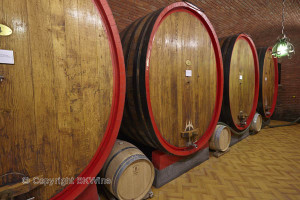 Allegrini has recently been nominated for “Best Winery” in Italy by Gambero Rosso. Of course there is an element of luck in this. Is it the luck that a talented and hardworking winemaking family deserves?
Allegrini has recently been nominated for “Best Winery” in Italy by Gambero Rosso. Of course there is an element of luck in this. Is it the luck that a talented and hardworking winemaking family deserves?
Marilisa Allegrini and her brother Franco is the sixth generation, but it is their father Giovanni who laid the foundation for the winery. He bought land in Veneto when it was cheap. It was land on the slopes and he was determined to make good wine from the local grapes. Nowadays, the land is more expensive, not least thanks to the amarone boom in recent years.
Read the rest of Mikael Karlin’s article on Allegrini on BKWine Magazine: La Poja, a vertical tasting with Marilisa Allegrini.
Favourites from the Winefinder presentation of new Bordeaux wines, “primeurs”
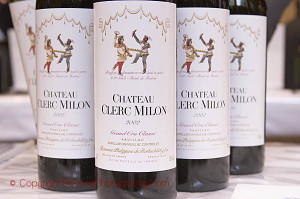 The internet wine merchant Winefinder has for five years arranged tastings of the Bordeaux primeurs at the prestigious Munich Brewery in Stockholm. It is the latest vintage from Bordeaux which is still in barrels, the vintage 2014. Nevertheless it is presented now and already for sale. It will not be delivered to the buyer until the first half of 2017, when the wines have spent the full time in barrel and then rested some in bottle.
The internet wine merchant Winefinder has for five years arranged tastings of the Bordeaux primeurs at the prestigious Munich Brewery in Stockholm. It is the latest vintage from Bordeaux which is still in barrels, the vintage 2014. Nevertheless it is presented now and already for sale. It will not be delivered to the buyer until the first half of 2017, when the wines have spent the full time in barrel and then rested some in bottle.
I have gone to many primeur tastings before; in 2014 gave me the impression of being elegant and charming with good fruit and good acidity and not particularly harsh tannins. But they are young wines. They will get 8 to 10 months more in barrels and then a year in bottle. They will probably close up to some extent and might then be good to drink about in 4-5 years. The only exception is probably young Sauternes that is fantastically good already!
Read the rest of Roland Eriksson’s article on BKWine Magazine: Favourites from the Winefinder presentation of new Bordeaux wines, “primeurs”.
Barone Ricasoli, inventor and re-inventor of Chianti
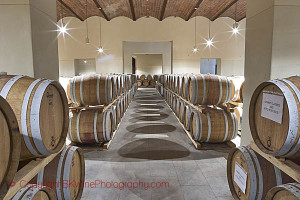 “I want to make wines that should be drunk in good company, not only tasted” says Francesco, the 32nd Baron Ricasoli with a liberating simplicity founded on a long family tradition. Francesco is the great grandson of the 28th Baron Bettino Ricasoli who in 1872 wrote the Chianti formula in a letter to Prof. Cesare Studiati at the University of Pisa.
“I want to make wines that should be drunk in good company, not only tasted” says Francesco, the 32nd Baron Ricasoli with a liberating simplicity founded on a long family tradition. Francesco is the great grandson of the 28th Baron Bettino Ricasoli who in 1872 wrote the Chianti formula in a letter to Prof. Cesare Studiati at the University of Pisa.
Francesco does not feel any pressure from the historic fact that the family has invented the formula for Chianti but is rather stimulated by further developing his wines. He has, for example, built a new winery between the harvests of 2011 and 2012 with both new and somewhat secret process technology.
Read more on this in Mikael Karlin’s article on BKWine Magazine, including how a bottle of 1927 was surviving: Barone Ricasoli, inventor and re-inventor of Chianti.
Don’t be an egoist! Share with your friends and other wine enthusiasts! Forward the Brief to your friends! Suggest that they sign up for a free subscription !
© Copyright BKWine






